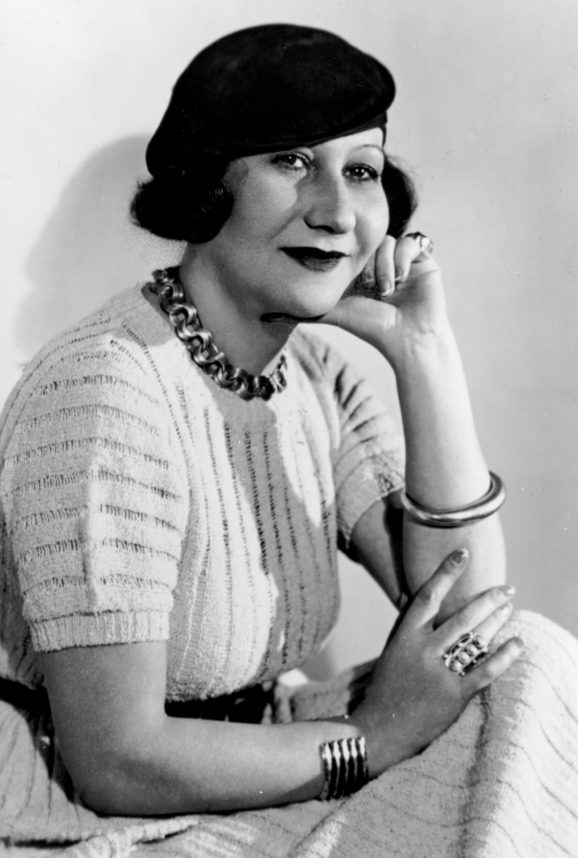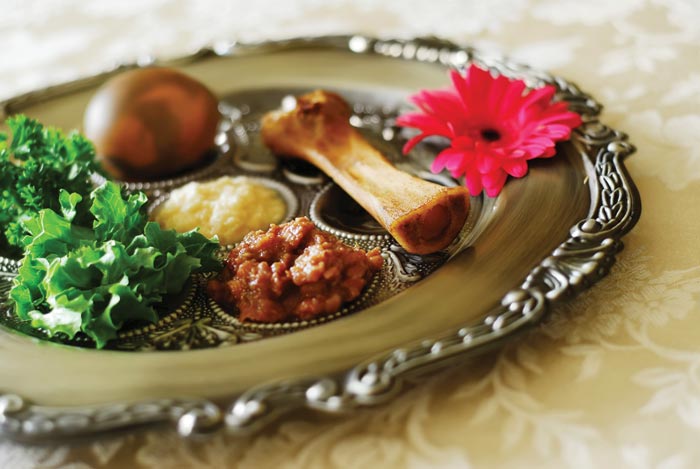
Artists and patrons of the arts who attended social gatherings in Los Angeles in the years between the two world wars would surely have met a loud, redheaded Jewish woman named Galka Scheyer. The German-born art dealer had a larger-than-life personality, and she harnessed her charisma to sell European modernism to an American audience. Her tireless efforts to promote the work of the so-called “Blue Four” — Lyonel Feininger, Alexei Jawlensky, Paul Klee and Wassily Kandinsky — also helped shape California’s reputation as a flourishing center for modern art.
Examples from Scheyer’s vast personal collection of modern art, along with hand-designed exhibition brochures and catalogues, correspondence and other ephemera, are on display at the Norton Simon Museum in Pasadena through Sept. 25.
“Maven of Modernism: Galka Scheyer in California” includes work by the Blue Four as well as paintings by Alexander Archipenko, László Moholy-Nagy, Pablo Picasso, Peter Krasnow and Kurt Schwitters, photographs by Edward Weston and Imogen Cunningham, and even drawings made by children who had taken Scheyer’s art classes.
She was born Emilie Esther Scheyer in Braunschweig, Germany, in 1889 to a middle-class Jewish family. The free-spirited, energetic Scheyer studied art and English in London, took painting lessons from artist Gustav Lehmann, traveled with him to Italy and studied at the École des Beaux-Arts in Paris, and then worked as a painter in Brussels.
In 1915, Scheyer encountered the work of Russian artist Jawlensky in Switzerland. She was extremely moved by a portrait of his called “The Hunchback.” She resolved to meet him, and soon became his close friend, model and agent, and got him included in a group show in Wiesbaden in 1921. That same year they visited the Bauhaus art school in Weimar, Germany, and Jawlensky introduced her to Feininger, Kandinsky and Klee, all instructors at the avant-garde school.
Her relationship with Jawlensky shaped the rest of her life. She gave up her own career as a fine-art painter to focus on promoting him and other artists. Jawlensky called her “Galka,” the Russian name for a small crow, known to be exceptionally intelligent, energetic and gregarious. She would later write to him in a 1936 letter, “I shall never forget those inspiring days when you initiated me into the sacred world of art. I shall never forget you really did make me what I am today.”
Scheyer convinced the four artists, in 1924, to make her their legal representative in the United States. They shared a common vision about art being a vehicle for a deeper understanding of the self and the world, and adopted the identity of the Blue Four not because of a shared aesthetic style, but largely for the sake of marketing. Scheyer equated the color blue with spirituality and unity. She organized the first American exhibition of their work at a New York gallery in 1925 and the following year traveled to California and began showing their work in major cities.
After the first California show, the San Francisco Examiner dubbed her the “prophetess of modern art.” She met William H. Clapp, the director of the Oakland Art Gallery, and convinced him to make her the gallery’s “European representative,” an unpaid position. She also taught art at the Anna Head School in Berkeley in the 1920s.
Scheyer was a force of nature. During the Great Depression and World War II, she arranged exhibitions, lectures and publications on the four artists’ work and negotiated sales on their behalf. Feininger affectionately called her “Little Tornado.” She befriended Diego Rivera and Frida Kahlo, who helped her stage a Blue Four exhibition in Mexico City in 1931. She also helped other European artists, including Moholy-Nagy, show their work in the United States.
Her success in selling work to L.A.-based modernist collectors Walter and Louise Arensberg fueled hopes of selling to other Hollywood collectors. She befriended such film stars as Marlene Dietrich, Harpo Marx and Greta Garbo, as well as film director and art collector Josef von Sternberg, who co-sponsored four Blue Four shows in L.A. in the 1930s.
The art did not sell itself. After the first Blue Four exhibition in Los Angeles in 1926, one artist remarked: “It reminded me of crawling things — of worms or things mouldering in the ground. Ugh! It was awful.”
Modernist art “was certainly much more avant-garde than the United States was used to,” said Gloria Williams Sander, curator at the Norton Simon Museum. “At that point in the ’20s, and even through the early ’30s, the taste for the day was still towards more realistic art. French Impressionism was very big. Of course, there was the Armory Show [the first large exhibition of modern art in America, held in New York in 1913], and the Dada artists were making inroads on the East Coast. But that was still a little bit of an outlier.
“So someone like Galka, who really understood the merits not only of German modernism but of abstract art — and could discuss those in a way that was digestible and inspiring — was really unique. … She made really great progress on behalf of those artists.”
Among the many important connections Scheyer made during that period were with Austrian-born architects Rudolph Schindler and Richard Neutra. She lived briefly in Schindler’s Kings Road House in West Hollywood in 1931, and in 1933 she commissioned Neutra to build her a concrete-and-glass house in the Hollywood Hills. The house served as an art gallery and meeting place for fellow art enthusiasts.
Scheyer visited Germany in 1932, but cut her trip short when she realized the peril she faced as both a Jewish woman and a promoter of modern art. Back in the States, she wrote letters and sent funds so that her two brothers could get their families out of Germany. They soon followed. Her mother, sadly, took her own life before being deported.
Scheyer’s first impression was not always favorable. The photographer Edward Weston wrote in his diary that “Galka repelled me at the start of our acquaintance” but that he later grew to enjoy her “insight of unusual clarity, and an ability to express herself in words, brilliantly, forcefully, to hit the nail cleanly.” Ceramic artist Beatrice Wood wrote, “When I first met Galka Scheyer I wanted to run. She was short, red-haired, plump, loud voiced — then I took myself to task. … The second time we met, I let go of esthetics and listened. I discovered an intelligent, caring woman and we became good friends.”
As a salesperson, she used her contacts to promote the work of the Blue Four. But she was also an outlier in the art world. She never married or had children, and she was not born to a wealthy family like Peggy Guggenheim.
“On the one hand, what she did was novel and wonderful. She also wore people down. There’s no way around it,” said Sander, the Norton Simon curator. “There were just times when people said, ‘I’ve had enough, I’m not going to buy this work.’ And she was lobbying because she was eager to sell it. And she did feel the responsibility to work on behalf of the four artists.”
When Scheyer died in 1945, she left her collection to UCLA with the same conditions as a 1944 gift of her friend Walter Arensberg’s modern art collection. Arensberg’s donation required UCLA to dedicate a building to his collection within five years; Scheyer additionally wanted the school to publish a catalogue of her collection.
When UCLA reneged on the Arensberg agreement, his collection went to the Philadelphia Museum of Art, while a committee donated Scheyer’s collection of 450 works by the Blue Four and other modern artists to the Pasadena Art Institute, which evolved into the Pasadena Art Museum. The late Norton Simon took over that facility in 1974 and fulfilled Scheyer’s provisions by publishing a catalogue of the collection. The Norton Simon Museum has since shown the work as part of its permanent collection and in several previous exhibitions.
What comes through most in “Maven of Modernism” is the deep friendships Scheyer forged with artists of her time. Maynard Dixon dedicated a pen drawing to Scheyer and called her “Madame Moderne Kunst,” or “Madam Modern Art.” The show includes several portraits of Scheyer. A Peter Krasnow painting depicts her lecturing an audience about modern art. And Edward Hagedorn painted her sitting on a crate, clapping her hands and looking up in rapt attention as a disheveled artist shows her his latest work.
“Maven of Modernism: Galka Scheyer in California” is on display at the Norton Simon Museum in Pasadena through Sept. 25. More information is at https://www.nortonsimon.org.
.




















 More news and opinions than at a Shabbat dinner, right in your inbox.
More news and opinions than at a Shabbat dinner, right in your inbox.